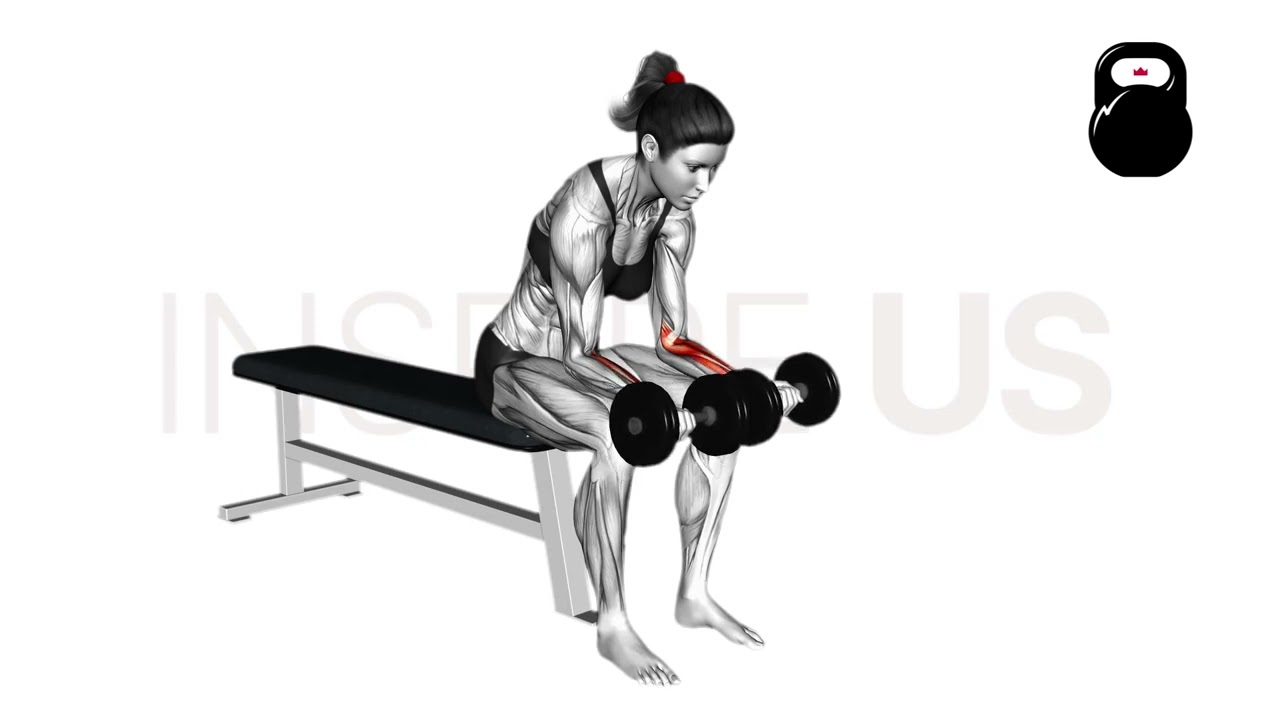Dumbbell Wrist Curls: Muscles Worked and More
Dumbbell wrist curls are a free weight isolation exercise primarily programmed as an accessory movement for the purposes of targeted muscular hypertrophy or specific-range strength development.
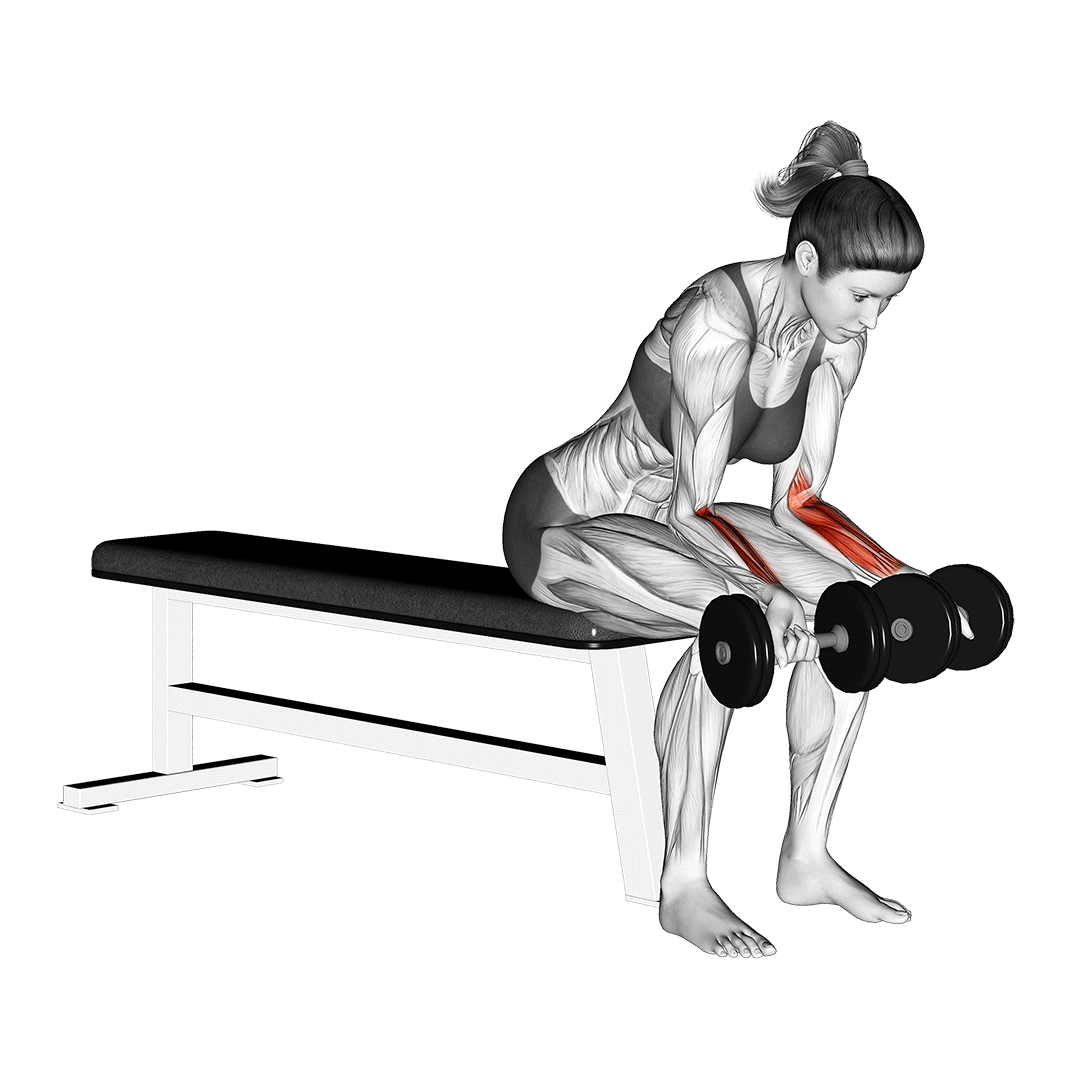
Some controversy surrounds dumbbell wrist curls due to their supposed risk of wrist strain and similar injuries to the outer arm extremities.
So long as a moderate amount of weight is used and proper form is followed, these risks are largely mitigated.
How to do Dumbbell Wrist Curls Safely
In order to perform a repetition of the dumbbell wrist curl, the lifter will first select a pair of low-weight dumbbells, seating themselves with the backs of their wrists atop their knees or atop a similarly comfortable surface.
Supporting the wrists but allowing the hands to hang by several inches off the edge, the lifter then allows the weight to bend their wrists backwards while maintaining some level of tension, preventing it from reaching the limits of its range of extension.
From this hand position, the lifter contracts their forearm muscles and pulls their hands towards their wrists - curling the dumbbell upwards until the palms are approximately parallel with the wrists.
Once the wrists are parallel with the palms, the repetition is considered complete.
Sets and Reps Recommendation
Because dumbbell wrist curls are low resistance by design, volume is the main factor you’ll want to play with.
For novices, aim for 2 sets of 12-18 repetitions at a low amount of weight.
What Muscles are Worked by Dumbbell Wrist Curls?
Dumbbell wrist curls are an isolation exercise, meaning that they are only meant to target a single muscle group - this of course being the wrist flexor muscles on the inner section of the forearms.
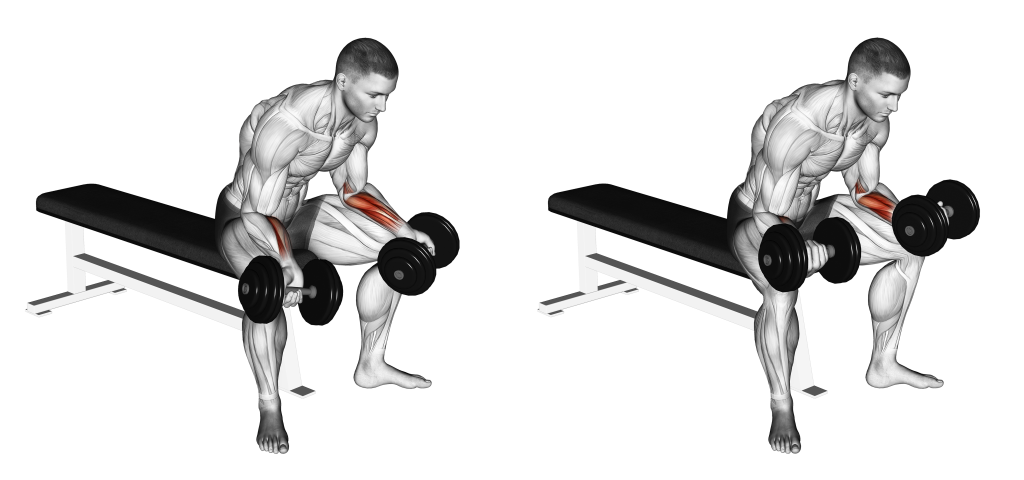
Specifically, the dumbbell wrist curl targets the flexor carpus radialis, flexor carpus ulnaris and the palmaris longus.
Common Dumbbell Wrist Curl Mistakes to Avoid
While there is no doubting that the dumbbell wrist curl is indeed an effective exercise, safety is an entirely different story. Avoid the following mistakes in order to prevent any injuries to the wrists and hands.
Hyperextending the Wrists
Although allowing the hands to bend back at the start of each repetition allows for a greater range of motion to be achieved, overdoing it by bending them too far can result in sprains of the wrist tendons.
Keep tension in the forearms as the wrists bend back at the start of each repetition, ensuring they do not hang freely or bend so far that pain radiates along the anterior forearm compartment.
Rotating the Wrists
Avoid rotating the wrists towards either direction when curling the dumbbell. Doing so will create excess torsion throughout the entire structure, and involve muscles other than the wrist flexors themselves.
Aim to keep the palms facing immediately upwards as the curl is performed, with the knuckles pointing away from the body at all times, never to the sides.
Using Too Much Weight
The majority of injuries relating to the dumbbell wrist curl come as a result of excessive loading of the wrist and forearm tendons. These injuries are otherwise entirely preventable by only lifting a light amount of weight and instead creasing training intensity through higher repetition volume.
If you find that you have difficulty maintaining your grip on the dumbbells out of sheer weight, then it is likely that they are too heavy. Aim for an amount of weight that you can hold indefinitely while standing upright.
Excessively Rapid Tempo
Apart from avoiding too much weight, also avoid creating excessive force by performing the exercise too quickly.
Said force is directly translated into the connective and osseous tissues of the forearms, wrists and hands - resulting in acute injury when other factors like poor form or excessive loading is present.
Aim to perform each wrist curl repetition in a slow and completely controlled manner, even at the end of the repetition when lowering the dumbbells.
Alternatives to the Dumbbell Wrist Curl
If the dumbbell wrist curl is contraindicated by pre-existing wrist conditions - or if you just want to target another part of your forearms - try the following alternative exercises out.
Reverse Dumbbell Wrist Curls
As mentioned earlier in this article, the dumbbell wrist curl synergizes effectively with exercises that target the wrist extensor muscles.
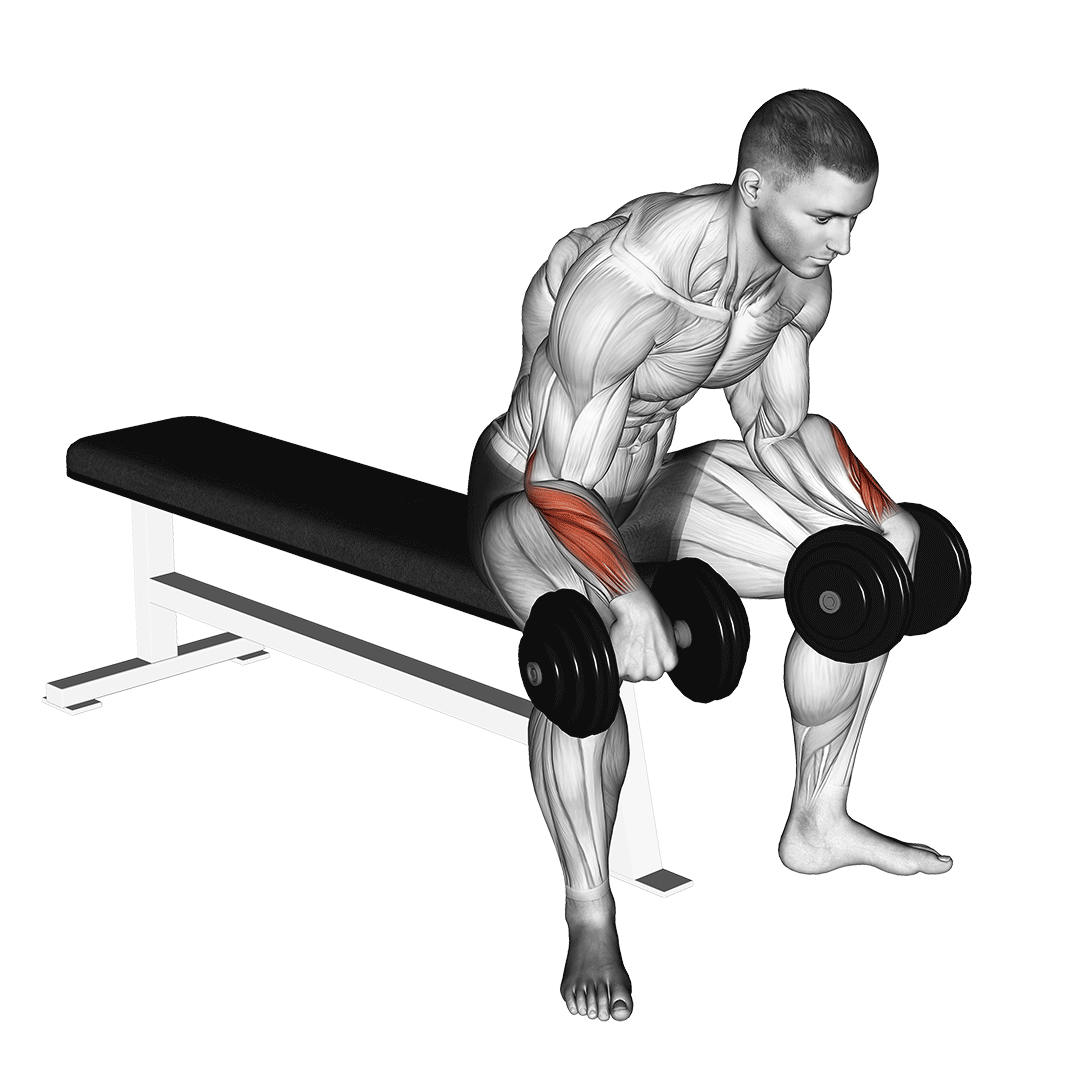
One of the best examples of these is the reverse wrist curl, which involves a palms-down wrist extension curling movement that targets said extensor muscles, rather than the wrist flexor muscles.
Wrist Rollers
Wrist rollers are a form of resistance training equipment involving the lifter “rolling” their wrists so as to target the forearm muscles with significant time under tension. Like dumbbell wrist curls, wrist rollers can also be used to target the wrist flexor muscles in a highly effective manner.
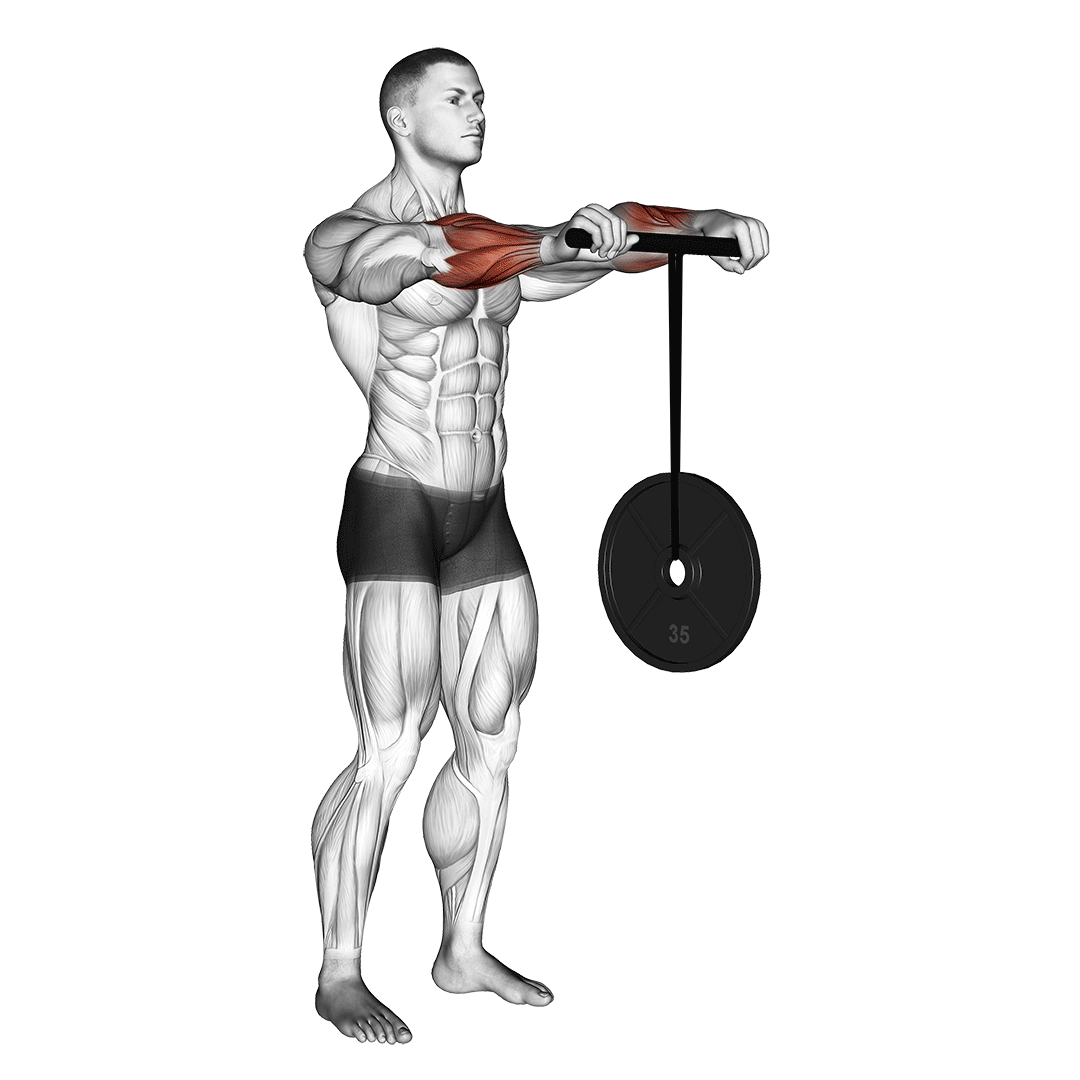
However, unlike dumbbell wrist curls, significantly less risk of wrist injury is present and the overall movement pattern is far more natural than curling a dumbbell with the wrists suspended independently.
Behind the Back Wrist Curls
Exactly as it sounds; behind the back wrist curls are simply wrist curls performed with the arms hanging behind the back.
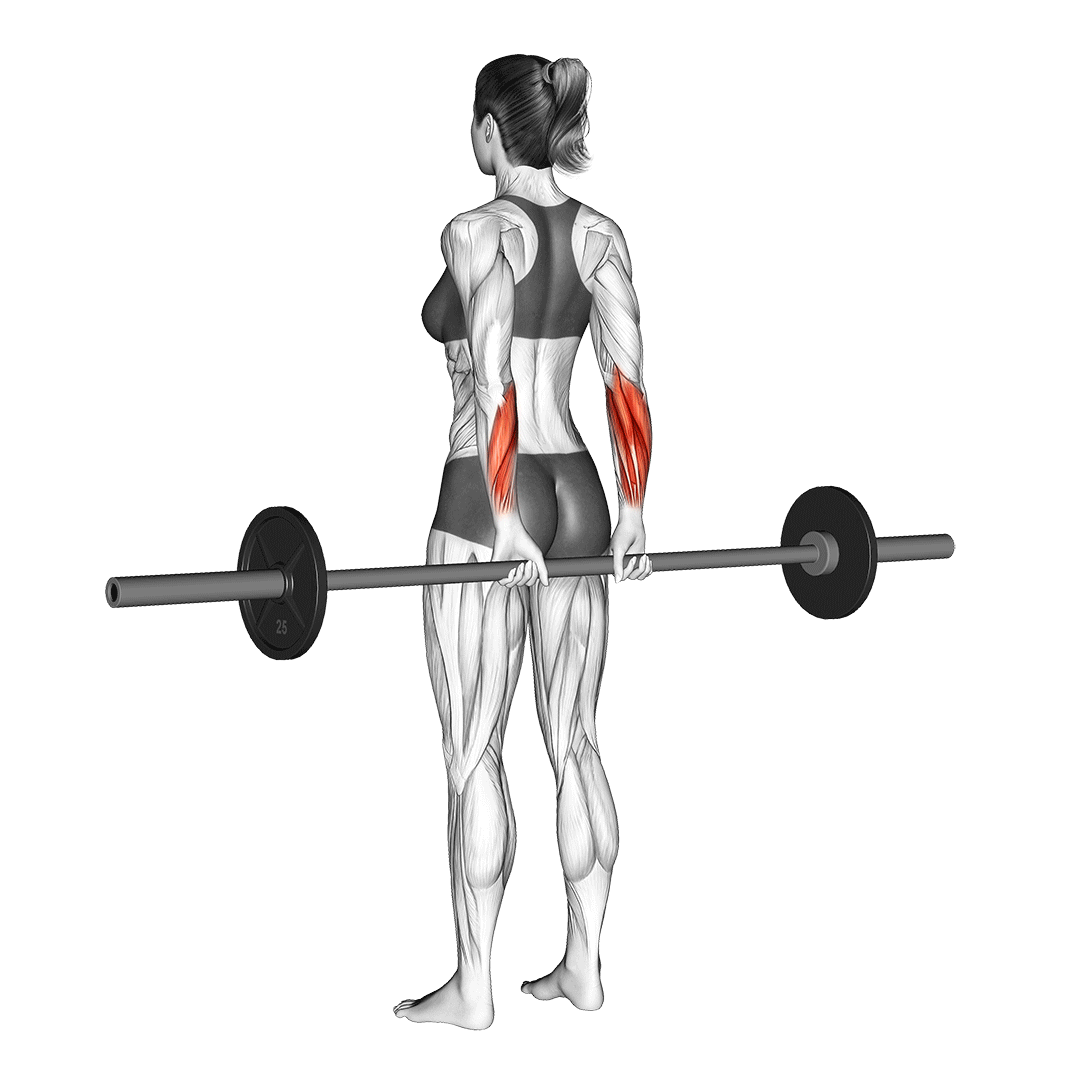
While presenting much the same benefits as dumbbell wrist curls, this particular alternative allows for greater loading and a relatively larger range of motion - meaning better muscular development as well.
Unfortunately, these benefits also come at the cost of using a barbell over a pair of dumbbells, which may be far more uncomfortable for certain individuals.
Frequently Asked Questions (FAQ)
Are Dumbbell Wrist Curls Good?
Yes - dumbbell wrist curls are excellent for building mass, strength and stability in the forearms.
So long as proper technique and programming are followed, it is unlikely that any negative effects will come from regularly doing dumbbell wrist curls.
Should I Do Dumbbell Wrist Curls Every Day?
Not at all. Avoid performing any sort of weighted resistance exercise on a daily basis, regardless of how small the range of motion or low the intensity. Doing so can result in overuse injuries, overtraining and poor muscular development.
How Heavy Should Wrist Curls be?
Wrist curls should use the minimum effective amount of weight possible. Aim to curl an amount that you can reasonably maintain a static grip on for an extended period without dropping it.
Avoid lifting too much weight with wrist curls, as this can easily result in sprains and similar soft-tissue injuries.
References
1. Stiggins, Chuck Ed.D.; Allsen, Phil Ph.D.. EXERCISE METHODS NOTEBOOK #39: Dumbbell wrist curl. National Strength and Conditioning Association Journal 10(6):p 81-81, December 1988.
2. Seo NJ, Armstrong TJ, Ashton-Miller JA, Chaffin DB. Wrist strength is dependent on simultaneous power grip intensity. Ergonomics. 2008 Oct;51(10):1594-605. doi: 10.1080/00140130802216925. PMID: 18803097; PMCID: PMC6755327.

